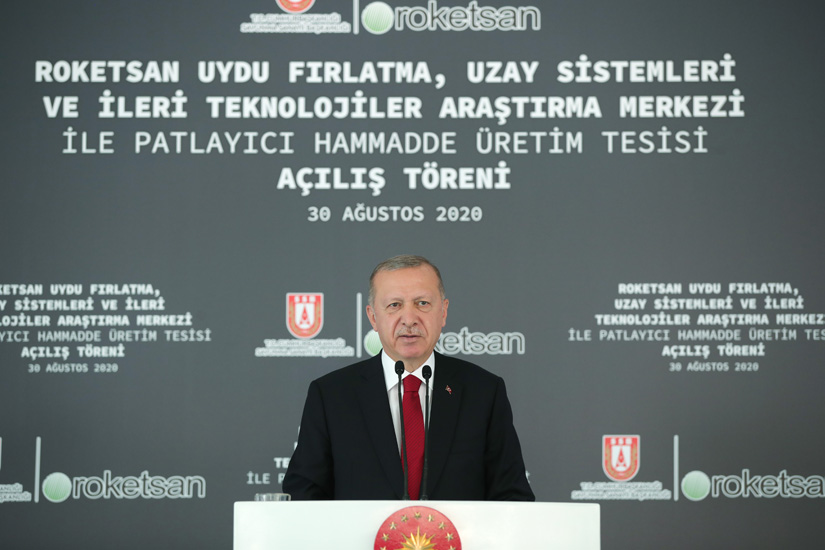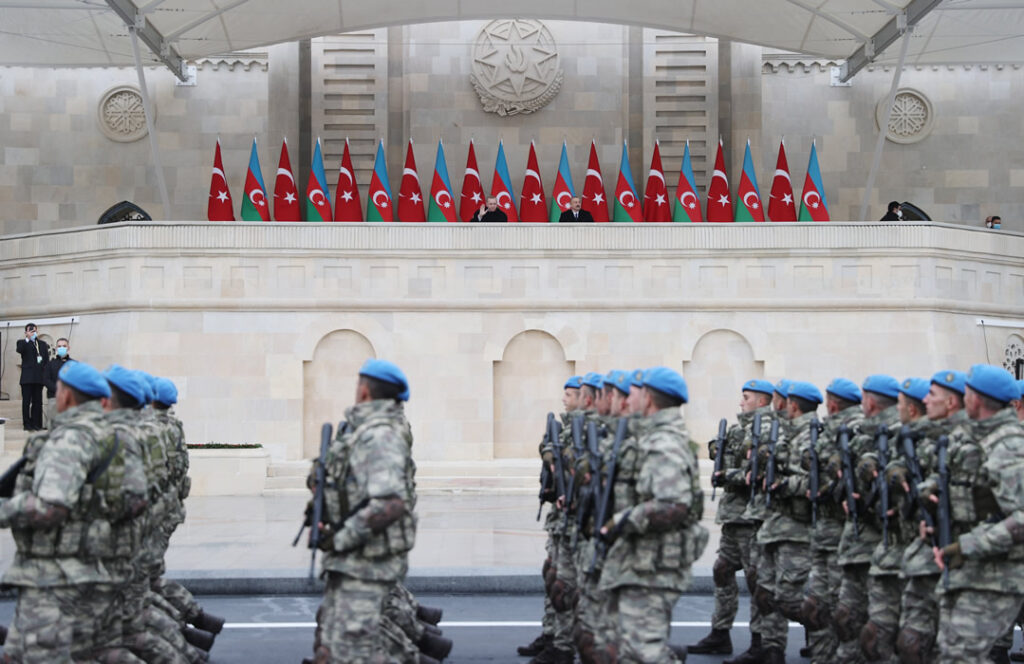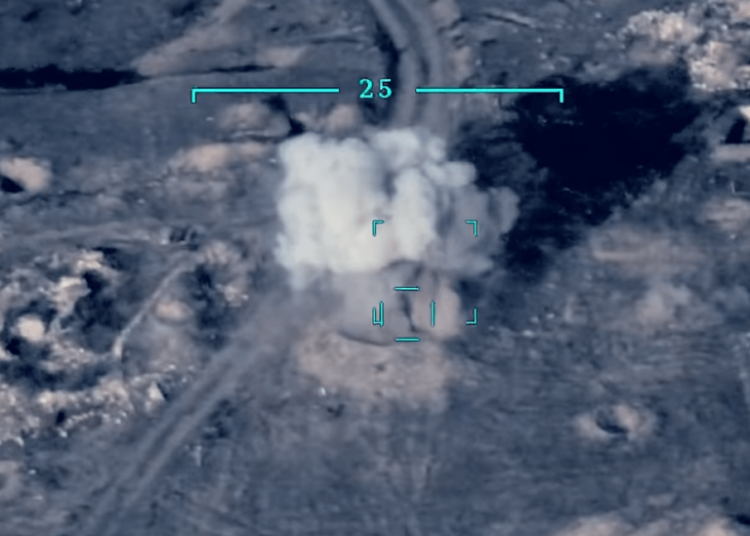Nordic Monitor
Conflict zones have become platforms for Turkey to demonstrate its new assertiveness in its region and advertise Turkish weapons technology to the world’s arms market.
Turkey is engaged in major indigenous defense programs such as tank, combat helicopter and laser guided missiles and has emerged as a major player in armed drone technology. Recent clashes in Syria, Libya and Nagorno-Karabakh have enabled Turkey to test its modern defense industry equipment.
According to a video released by a Turkish defense website, the country’s first surface-to-surface and laser-guided missile TRLG-230 was used for the first time by the Azerbaijani army against Armenian targets.
The field tests in real battles in 2020 helped Turkey improve its armed drones (unmanned aerial vehicles, UAVs). Footage of Turkey’s Bayraktar TB-2 drones destroying several Russian-made Pantsir missile defense systems in Syria, Libya and Nagorno-Karabakh this year also increased their global visibility.
Turkey has operated laser-guided missiles launched from manned or unmanned aircraft, but the TRLG-230 is the first missile with a surface-launch capability. The new system, based on a laser seeker head, was integrated into its TRG-230 missile system by Roketsan.
In August Roketsan tested the TRLG-230 laser-guided missile from a Bayraktar TB2 drone at a distance of 70 kilometers. Videos of the test were shown for the first time during the opening ceremony of Roketsan’s research center on August 30 in the presence of President Recep Tayyip Erdoğan. “This missile system, named TRLG 230, has been developed in a way that it can hit targets marked by UAVs and UCAVs from land. The target marked by the Bayraktar TB2’s laser was hit by a laser-guided 230-millimeter missile system,” President Erdoğan said at the ceremony.
“We continue to work on technologies that will bring new capabilities to the missile race, especially to our security forces. … The new development will especially strengthen our soldiers’ positions on the front lines,” he stated.

Roketsan, part of the Turkish Armed Forces Foundation (TAFF) and controlled by the Turkish government, is one the largest defense companies in Turkey and is among the top 100 defense contractors globally. The company develops and manufactures different types of rockets, missiles, guided munitions along with their launching and propulsion systems, seekers, guidance-control systems, fuzes, warheads, mechanical parts, algorithm and software.
In August the US-based Defense News magazine listed seven Turkish defense companies — Roketsan, military electronics specialist Aselsan, Turkish Aerospace Industries, armored vehicles maker BMC, military technologies specialist STM, armored vehicle maker FNSS and military software specialist Havelsan — in its list of top 100 global firms with the highest defense revenue.
TAFF was founded in 1987 to “enhance the combat strength of the Turkish Armed Forces” and has played a leading role in the establishment and development of the defense industry. In addition to Roketsan, TAFF directly or indirectly controls major companies such as Havelsan (informatics), Isbir (generators and alternators), Aspilsan (battery pack products), Aselsan (electronics) and TAI (aerospace and satellites).

The key breakthrough came in December 2015, when Bayraktar successfully test-fired a rocket from its TB2 drone for the first time. Since then Turkey has been a key market for the purchase of armed drones such as the Bayraktar TB2 and the TAI Anka, which have proven their capabilities in Syria, Iraq and Libya and in the recent conflict between Armenia and Azerbaijan. The Bayraktar TB2, manufactured by Turkish company Baykar Makina, successfully test-fired a rocket for the first time in December 2015.
The Bayraktar TB2 launching MAM-L and MAM-C missiles proved adept at destroying targets in those cases. Turkey has reportedly been using its Koral jamming system built by Aselsan to degrade the effectiveness of air defense radars.
Turkish drones have also changed Ankara’s operations against the outlawed Kurdistan Workers’ Party (PKK) in the southeast of Turkey and northern Iraq, severely limiting the group’s movements.
Between February 27 and March 5, Turkey conducted Operation Spring Shield to halt the Syrian Arab Army’s blitz offensive in Idlib and to press Moscow into brokering a ceasefire. In addition to the loses of the Syrian army, Turkey’s UAVs destroyed a number of Russian Pantsir and Buk air defenses within a week.
In the Libya crisis the Libyan National Army’s (LNA) goal of seizing the capital abruptly ended in June after Turkey’s intervention with its supply of Turkish UAVs. According to former UN Special Representative to Libya Ghassan Salame, the Libyan conflict is “the largest drone war in the world.”
Most recently, Turkish drones played a similarly crucial part in the region of Nagorno-Karabakh, a point of dispute between Armenia and Azerbaijan since 1991. Azerbaijani President Ilham Aliyev has repeatedly confirmed the use of Turkish drones against Armenian targets and praised the contribution of Turkey’s armed drones to the Azerbaijani army.












